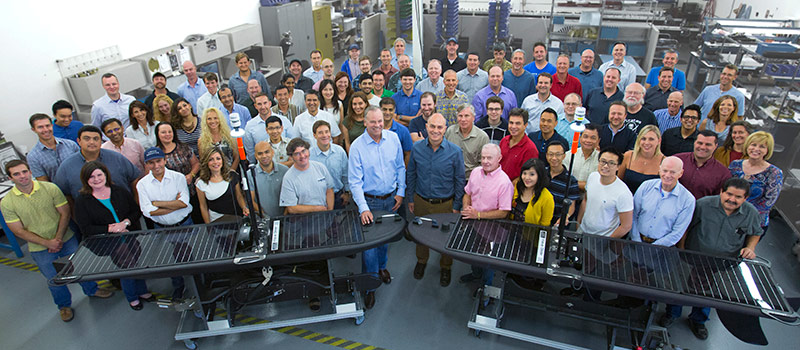And to Think it All Started Listening to Humpback Whales…
Liquid Robotics — January 5, 2017
Today Liquid Robotics celebrates our ten-year anniversary. A decade ago, I don’t think any of us involved with founding the company could have imagined the journey before us; a journey to create fleets of wave and solar powered ocean robots, robots that sustainably operate for months at a time while collecting and communicating data. The journey began with a whimsical interest in listening to the singing of humpback whales. A decade later, we are still listening for things in the ocean, yet now we’re also listening for submarines, illegal fishing boats, and using sound to communicate with other robots and sensors on the bottom of the sea.
As I reflect back on the early years, it’s an amazing story of a small group of people collaborating to create a pioneering solution that has grown in use across the globe. For those who don’t know the story, allow me to provide an insight to the genesis of the Wave Glider.
The story begins with Joe Rizzi, an engineer, entrepreneur and venture capitalist who happened to enjoy the singing of humpback whales. He and his friends at Jupiter Research Foundation set off to figure out how to acoustically capture whale songs and pipe them back to his home in Puako, Hawaii, and out to the world over the internet. Working with his neighbor, Bob, they applied their engineering expertise to produce a series of “hacks,” each iteration improving on last. Using resources like Bob’s kayak, pickle jars, hydrophones, radios and cinderblocks, they battled obstacles like salt water, wind, waves, and the mysterious crackling sound created by thousands of snapping shrimp!
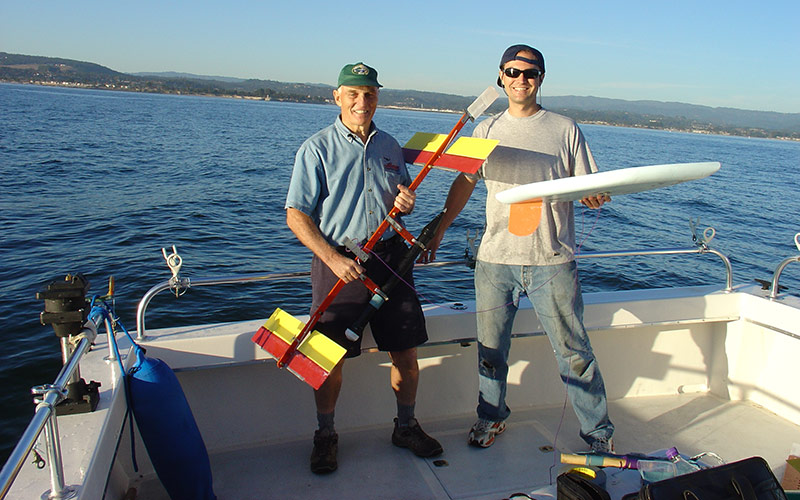
Joe also enlisted my dad, aerospace engineer and entrepreneur Derek Hine, and me for help. We put our heads together and went off to design what would become the Wave Glider. We knew the platform had to generate its own energy, have a small footprint and not harm the whales or environment. We began to imagine an ocean robot that would convert wave energy into forward propulsion.
Testing began in my bathtub and quickly progressed to a small aquarium I procured on Craigslist. I made dozens of models using materials like styrene, nails and fishing line. Next, I found my brother’s swimming pool came conveniently equipped with a plastic trash can and my brother, who produced “wave power.” From there, I took the show to Joe’s pool with a few of the prettier fish-inspired models. To our elation, we watched the little models wriggling around the swimming pool, long after we stopped making waves! The subtle wind ripple was all it took. At this point, we thought if we could scale the design it could work in the ocean. Bit by bit, we grew and improved the models and soon ended up with a wave- and solar-powered ocean vehicle that could hold station, collect data and communicate the singing of the humpback whales to shore!
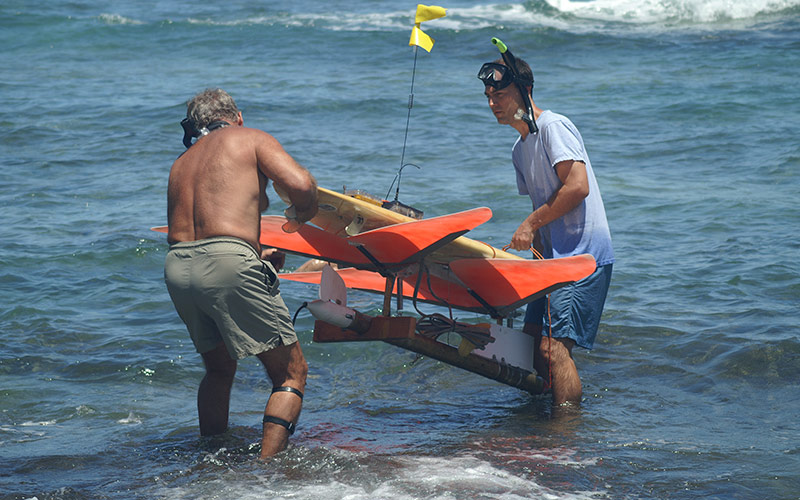
We founded Liquid Robotics on this day in 2007, and started the interesting work to convince would be customers that this was all real. The US Navy was early in line. They quickly realized the Wave Glider’s potential and proceeded with an evaluation. To this day, we are proud to call the Navy our leading customer.
Over the years, there have been many challenges and many great rewards. We’ve learned a lot from spending ten years operating in the unpredictable, vast regions of the ocean. Accumulating over 1.2M nautical miles at sea (equivalent of 51X around the Earth), this experience has enhanced our product, our company, and has contributed to the advancement of long duration unmanned systems.
None of this could have been accomplished without passion and commitment of our employees, investors, suppliers and partners. I’m incredibly proud of all of them. Equally, I’m appreciative of our customers who have worked with us to move the Wave Glider from a new, unproven ocean robot to workhorse platform.
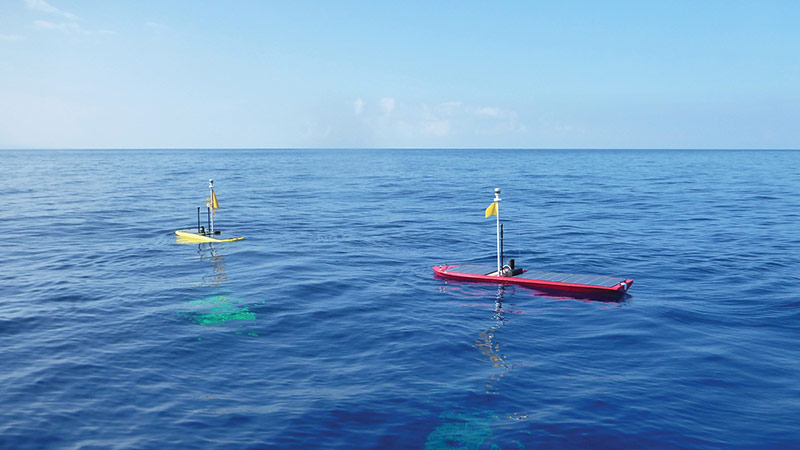
As I look forward to the next ten years, it’s exciting to see how robots are beginning to change the way we interact with the ocean. Unmanned systems will play an increasingly important role to address the grand challenges facing our planet such as climate change, dwindling energy and food sources. Equally they are critical to fostering a sustainable ocean economy.
The challenge ahead of all us is one of moving well beyond today’s successes and today’s thinking. We need to think big, and think globally. We need to create a planetary information network, an interoperable “system of systems“ between manned and unmanned vehicles that will scale, run on renewable energies, and have the reliability we can trust.
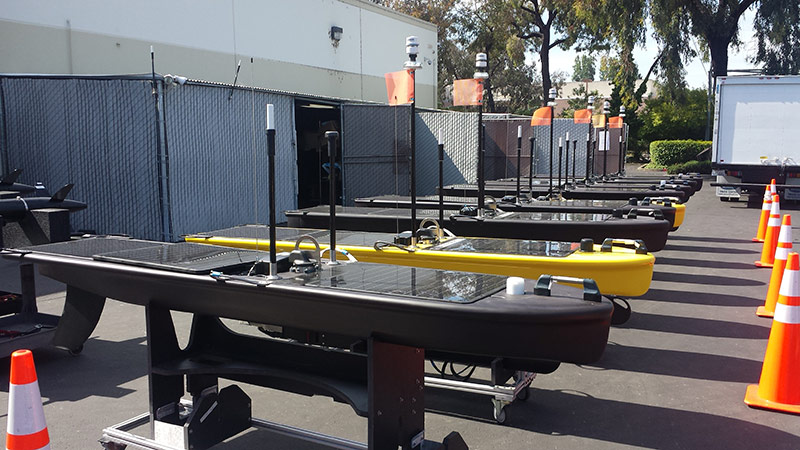
From listening to the singing of humpback whales to exploring every ocean of the world, to gathering data for the world’s biggest companies and research organizations, and watching our robots brave hurricanes, icebergs and shark attacks—the last decade has been an exciting one for Liquid Robotics.
Now, as part of The Boeing Company, I’m more optimistic than ever about the next 10 years. Today, I find myself amazed at how Liquid Robotics and our growing group of customers, partners and collaborators are turning the incredible potential of networks of persistent, sustainable ocean robotics from vision into reality. The journey, it would seem, has just begun!
